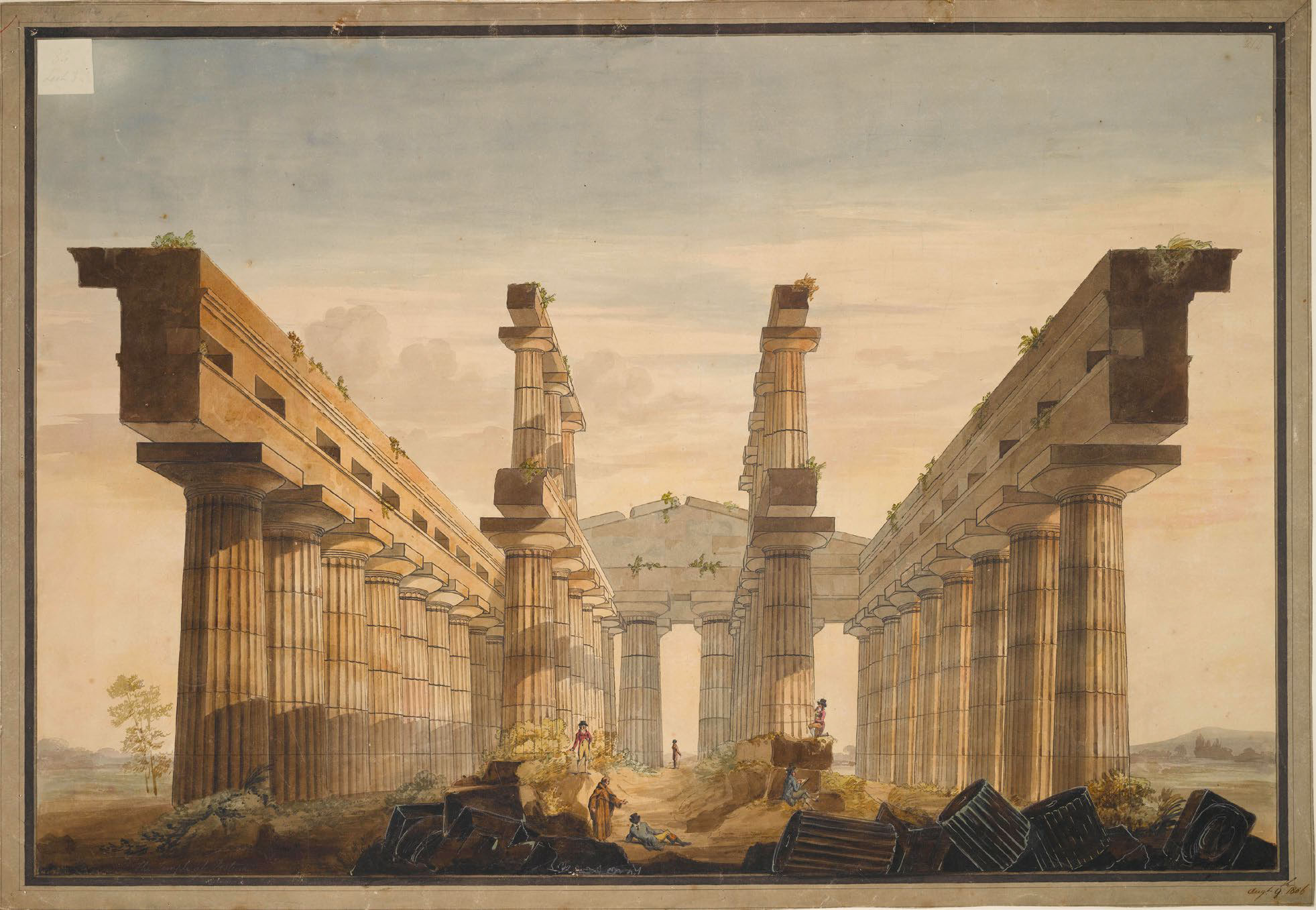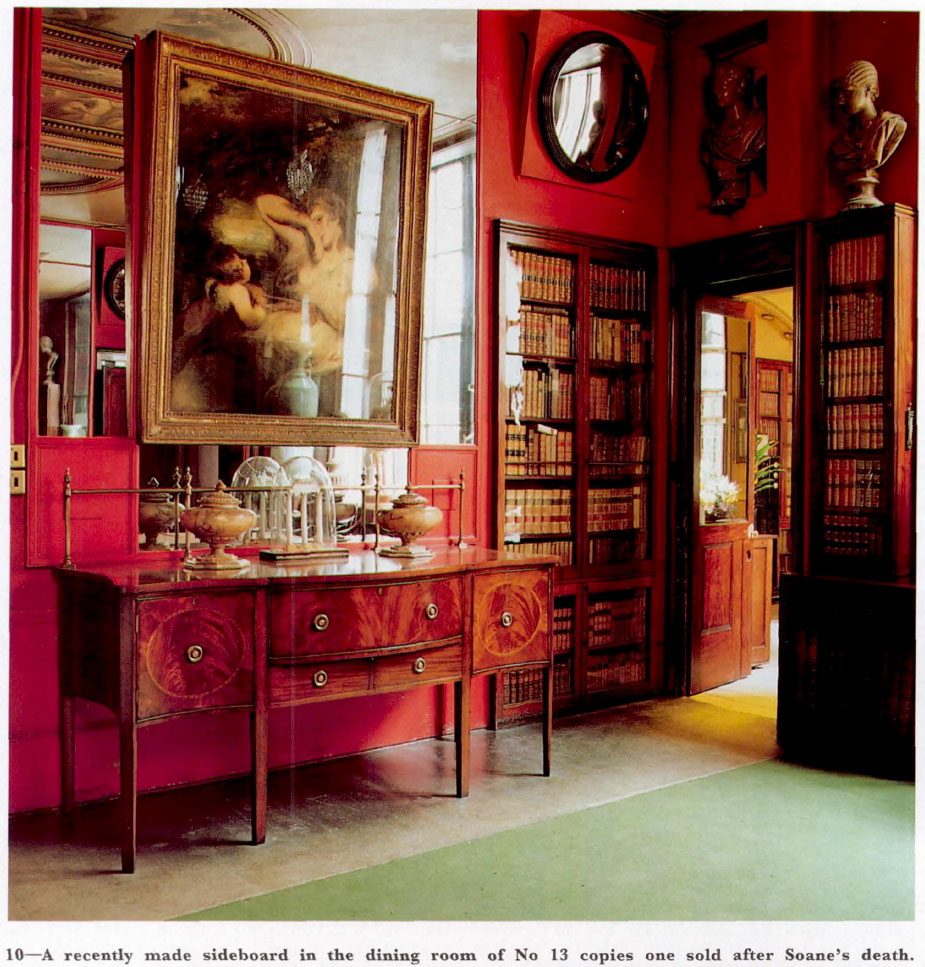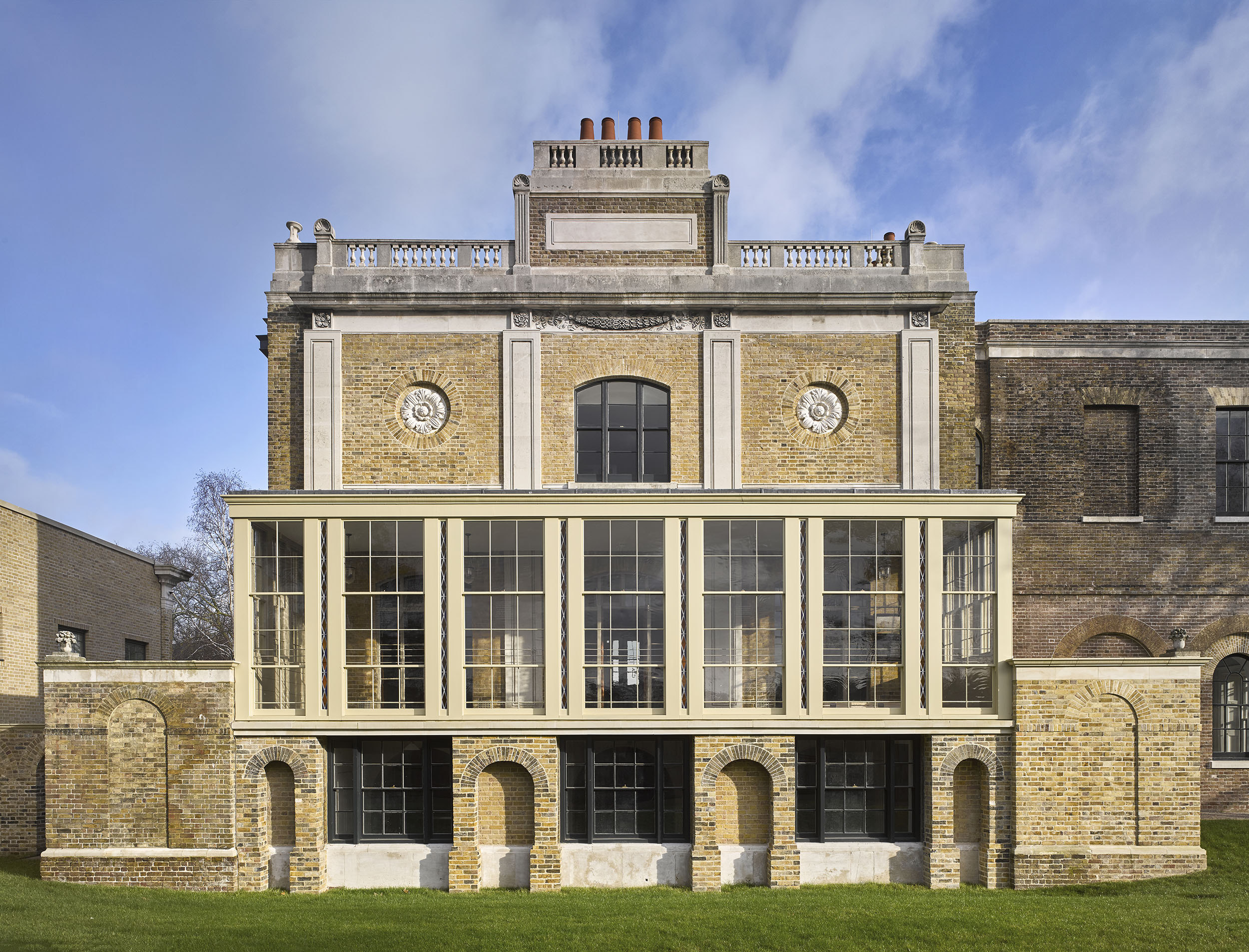My favourite painting: Dr Frances Sands
Dr Frances Sands, curator of drawings and books at Sir John Soane’s Museum, chooses an extraordinary work from her own institution's archive.


Dr Frances Sands on The interior of the Temple of Neptune by the Soane office
‘A masterpiece of both perspectival draughtsmanship and the watercolourist’s art, there is no other example within Sir John Soane’s collection that so embraces me. Illustrating a ruined temple at Paestum, this is one of 1,000 watercolours produced to illustrate Soane’s lectures at the Royal Academy.
'Here, he shares the splendours of Paestum with students who had been deprived the glories of travel by the Napoleonic Wars. The image conveys the power of Doric architecture with almost overwhelming gravity, yet also offers levity through the inclusion of figures: fashionable British Grand Tourists under the guidance of a cloaked leader.’
Dr Frances Sands is the curator of drawings and books at Sir John Soane’s Museum
Charlotte Mullins comments on The interior of the Temple of Neptune, Paestum
This architectural drawing was one of 9,000 completed by the neo-Classical architect John Soane and his office. It was completed in 1806 and shows the Temple of Neptune, a recently rediscovered Doric temple dating from about 450BC in the town of Paestum, Italy. Paestum was a Greek colonial settlement near Pompeii dedicated to Poseidon. When the temple was brought to the attention of Grand Tour travellers by Giovanni Battista Piranesi’s etchings in 1778, it was dubbed the Temple of Neptune, the Roman equivalent of Poseidon, but it has subsequently been attributed to Hera (an altar to Zeus has also been found there).
Piranesi created a series of imposing black-chalk drawings of the three Doric temples still standing in Paestum in 1777. He died before he could fully translate his series to etchings, so his son finished them and published them posthumously in 1778.
Soane’s version of the Temple of Neptune is more orderly and informative than Piranesi’s. It shows collapsed columns in the foreground and a sharp perspective through the roofless travertine temple to the rear pediment. Grand Tourists mill around the fallen pieces and emphasise the scale of the temple, which was 200ft long.
Soane met Piranesi in Rome shortly before the artist’s death. The architect later acquired his Paestum drawings and they can be seen today in the Sir John Soane’s Museum in London, together with Soane’s vast collection of 30,000 architectural and topographical drawings. This sketch is featured in the exhibition ‘Hidden Masterpieces’, until June 5.

The restoration of John Soane's museum 'which raised the standards for the re-creation of a historic interior'
Sir John Soane despaired of his children to such an extent that he left his worldly goods to the nation,

In Focus: The beauty of William Hogarth's 'Progress' Series, from his engraving skill to his story-telling gymnastics
Philippa Stockley revels in the humour, perspicacity and story-telling that radiate from Hogarth’s ‘Progress’ series.
Sign up for the Country Life Newsletter
Exquisite houses, the beauty of Nature, and how to get the most from your life, straight to your inbox.

Pitzhanger Manor: The Ealing villa that's the great John Soane's 'architectural self-portrait'
Following a boldly conceived restoration, the interest and quality of Sir John Soane’s Pitzhanger Manor in Ealing villa shines out
Country Life is unlike any other magazine: the only glossy weekly on the newsstand and the only magazine that has been guest-edited by HRH The King not once, but twice. It is a celebration of modern rural life and all its diverse joys and pleasures — that was first published in Queen Victoria's Diamond Jubilee year. Our eclectic mixture of witty and informative content — from the most up-to-date property news and commentary and a coveted glimpse inside some of the UK's best houses and gardens, to gardening, the arts and interior design, written by experts in their field — still cannot be found in print or online, anywhere else.
-
 Six rural properties with space, charm and endless views, as seen in Country Life
Six rural properties with space, charm and endless views, as seen in Country LifeWe take a look at some of the best houses to come to the market via Country Life in the past week.
By Toby Keel
-
 Exploring the countryside is essential for our wellbeing, but Right to Roam is going backwards
Exploring the countryside is essential for our wellbeing, but Right to Roam is going backwardsCampaigners in England often point to Scotland as an example of how brilliantly Right to Roam works, but it's not all it's cracked up to be, says Patrick Galbraith.
By Patrick Galbraith